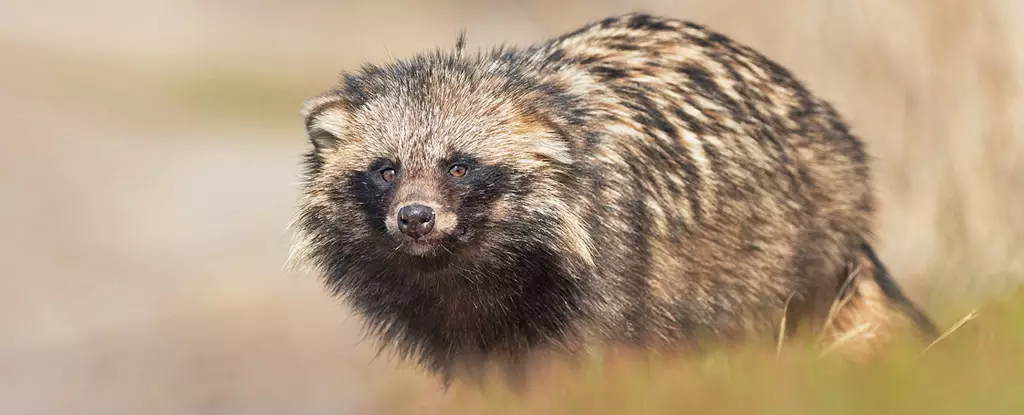The emergence of COVID-19 fundamentally altered the fabric of global society, leaving no corner of the world untouched. The epicenter of this unprecedented event is often traced back to the Huanan Seafood Market in Wuhan, China, where the virus is believed to have first jumped from wildlife to humans. Recent research has further illuminated the specific animals linked to this zoonotic spillover, reinforcing the existing scientific consensus regarding the virus’s origins. By examining metagenomic RNA data collected shortly after the market’s closure, scientists have gleaned insight into the complicated tapestry of the pandemic’s inception.
Evidence suggests that the virus, known as SARS-CoV-2, first emerged in late 2019 amidst the bustling atmosphere of Wuhan— a city renowned for its concentration of wildlife trade. It is crucial to understand that while conspiracy theories surrounding the Wuhan Institute of Virology often capture public imagination, extensive studies have shown no indication that this virus was engineered in a laboratory. Nonetheless, the overlap between the institute’s research focus and the location of the outbreak has fed speculation regarding a potential lab-related release. In sharp contrast, the predominant hypothesis among scientists posits that the virus most likely made the leap to humans from various animals present in the market, where conditions were ripe for such transmission.
In a bid to establish clarity surrounding the virus’s origins, an international collaborative study analyzed pivotal RNA data collected by the Chinese Center for Disease Control and Prevention (CDC) shortly after the initial market closure. This analysis, led by evolutionary biologist Florence Débarre and microbiologist Alexander Crits-Christoph, utilized state-of-the-art metatranscriptomic sequencing to scrutinize over 800 samples collected from the Huanan market environment. Their findings point towards a wide array of animal species that could have played critical intermediary roles in the viral transmission.
Upon dissection of the sequencing data, researchers identified remnants of organisms such as raccoon dogs and civets in proximity to where SARS-CoV-2 had been detected, though it is essential to note that definitive proof of infection remains absent due to the rapid removal of animals from the site prior to sample collection. The study paints a picture of a likely scenario wherein these animals had a role in facilitating the virus’s transfer into the human population, thus substantiating the theory of an animal-to-human transmission pathway.
The revealing moment in Débarre’s study occurred when they linked the presence of specific species in the Huanan market to their genetic material found in the environment. The common raccoon dog emerged as the most genetically prevalent species within the samples. Additionally, they discovered evidence of the masked palm civet, an animal associated with the original SARS outbreak in 2002. Notably, raccoon dogs are known for their susceptibility to coronaviruses, raising alarm bells regarding the risks posed by wildlife trade in urban settings. As ecologist Michael Worobey aptly articulated, introducing wildlife into densely populated cities serves as an invitation for viral spillover events—a dangerous gamble given the potential for rapid transmission among human hosts.
The insights derived from this study extend beyond merely tracing the origins of COVID-19; they also carry profound implications for future pandemic preparedness. The convergence of wildlife and human populations in environments like the Huanan market exemplifies the critical need for heightened vigilance regarding zoonotic diseases. Despite a growing focus on increasing biosafety in laboratories post-COVID, much remains to be done in mitigating the risks associated with wildlife trade, which can catalyze the onset of future pandemics.
Moreover, researchers emphasize that this newly acquired understanding of COVID-19’s origins underscores the necessity of proactive measures to prevent similar outbreaks. The findings bolster the case for stricter regulations surrounding wildlife trade, monitoring of environments with animal-human interactions, and accelerated research regarding the interplay between various species and emerging infectious diseases.
In summation, the thorough analysis of the Huanan market data not only strengthens the argument for its role as a launching pad for COVID-19 but also highlights the importance of vigilance in the context of animal health and human interaction. In a world increasingly intertwined with nature, ensuring the integrity of these interactions must remain a priority. By learning from the past and leveraging scientific data, society can better prepare for future threats, thereby safeguarding global health against the relentless tide of zoonotic diseases.


Leave a Reply